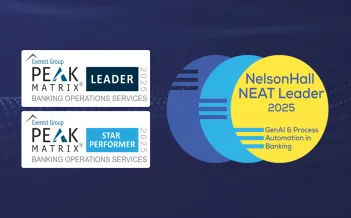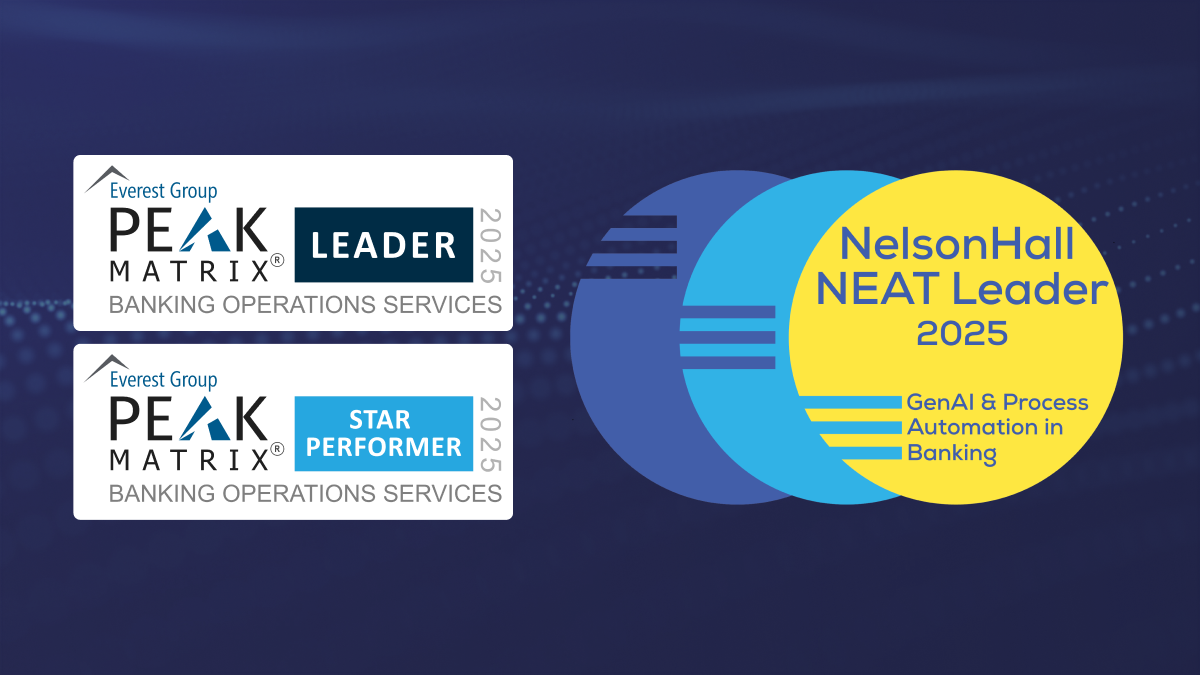Most businesses are witnessing technology disruption and fintechs are no exception. They are built on the premise of leveraging technology and automation to compress costs and generate business efficiencies through agile operating models. With the new normal unfolding, leaders in the fintech space see huge potential to leverage. Artificial Intelligence AI and automation for reasons beyond simple cost-savings.
Extreme Automation starts with RPA at its core and expands automation capability with AI, process mining, analytics, and other advanced tools. As competition intensifies in the fintech space and volatilities increase amid the new normal, the process automation strategies that fintechs adopt will be a key differentiator in defining their success.
Recent research indicates that the fintech industry could add up to USD 512 billion in new global revenues through Intelligent Automation.
The right approach to Extreme Automation for fintechs
Fintechs are not new to Robotic Process Automation (RPA). However, a fragmented approach to blockchain, NLP, cloud, AI/ML, has led to disintegrated operations across the customer lifecycle for most fintech companies. The winners in fintechs will be those who can reimagine their operating model and apply it across the customer journey to harness the full potential of Extreme Automation.
Leaders in the fintech industry have already begun taking Extreme Automation directly to their consumers, leveraging it as a revenue generator beyond just a means to compress internal costs. Over 35% of financial services firms have witnessed 2 to 5% increase in top-line growth from automation, with faster time to market and improved cross-selling being the two key factors that drive gains.
Let’s explore the specific use cases of Extreme Automation for fintechs across their customer lifecycle:
Customer acquisition
Machine Learning is increasingly emerging as the automation focal point for fintechs’ Customer Relationship Management (CRM). ML-driven CRM systems can help fintechs define accurate buyer personas, drive targeted lead generation, and score and qualify leads based on Propensity-to-Buy models built using AI and predictive analytics.
Propensity-to-buy models link customer characteristics and product needs to identify customers who will buy (buyer intent) and the right solution for them. This is done by analyzing historical data on past purchases and combining it with customer data from internal (transaction data) and external sources (social networks, demographics, online behavior, etc.). Companies utilizing ML for lead generation report more than 50% increase in leads.
Fintech lenders especially stand to gain from using ML to expand into the no-file/thin-file customer segments, especially millennials and rising Gen Zers with little to no credit history. For instance, a leading Financial Services provider used an AI-based loan approval workflow to increase loan approval rates by 25%, and for people under 20 by threefold.
Customer conversion
Leveraging the Marketing Automation aspect of Machine Learning, fintechs can enable more targeted lead nurturing and improve conversion rates. This is done by creating a focused communication and distribution strategy that tracks which pieces of content (videos, blogs, influencer posts, etc.) get the most click-throughs or engagement on which channel (social media, mobile notifications, etc.) and time and use that to create personalized and targeted content.
For fintech lenders, AI solutions can predict borrower delinquency and enable real-time automated segmentation and prioritization of borrower risk to help convert more leads at lower costs through personalized communication strategies. Propensity-to-buy models also lead to better results in predicting a product of interest for a customer segment to enhance marketing effectiveness and increase sales productivity.
Customer retention
Automated and accurate data collection across the customer lifecycle and unified customer view improves customer service associates’ ability to readily access customers’ information, purchase history, previous communication notes and so on, and provide better resolution. This also drives faster response time, in turn improving customer service delivery, experience, and retention.
64% of financial services organizations from across different segments have witnessed more than 60% improvement in customer satisfaction from applying the technology mix of Extreme Automation. ML-driven CRM systems can help fintechs gain meaningful insights into the customer journey, and then leverage those data to drive customer retention and future cross-selling/up-selling initiatives.
For fintech lenders, AI-driven debt collection strategies can help improve the collections experience for customers, in turn driving better retention, while improving recovery and reducing cost-to-collect.
Implementing Extreme Automation requires deep domain expertise
Even as the benefits of Extreme Automation abound, implementing it at scale is fraught with challenges ranging across business, technology, and staffing aspects. Only 10% of financial services companies have implemented the technology at scale moving beyond proof of concept to live deployment of intelligent automation systems. Most (48%) struggle to find the right resources to implement Extreme Automation effectively, while 46% lack an adequate data management strategy, and 43% find issues in establishing a clear business case for Extreme Automation. Clearly, few organizations have the technological maturity to implement Extreme Automation technologies.
This is cause for extreme concern, especially given that fintechs and other financial services companies face increasing competition from ‘BigTech’ players, such as Amazon, Apple and Google. How can fintechs accelerate their adoption of Extreme Automation and progress from short-term AI and automation use cases to a long-term AI-driven business strategy? While there’s no one-size-fits-all solution, partnering with an experienced Automation services provider with proven experience and ready-to-use fintech customized strategies and tools is a sure-fire way to success.
To know more about the benefits of Extreme Automation, read our blog Navigating the Next Normal with Extreme Automation
Featured Resource
Download our whitepaper ‘The five key battlegrounds in financial services’ for insights on the changing landscape of financial services and where the opportunities lie for players.










